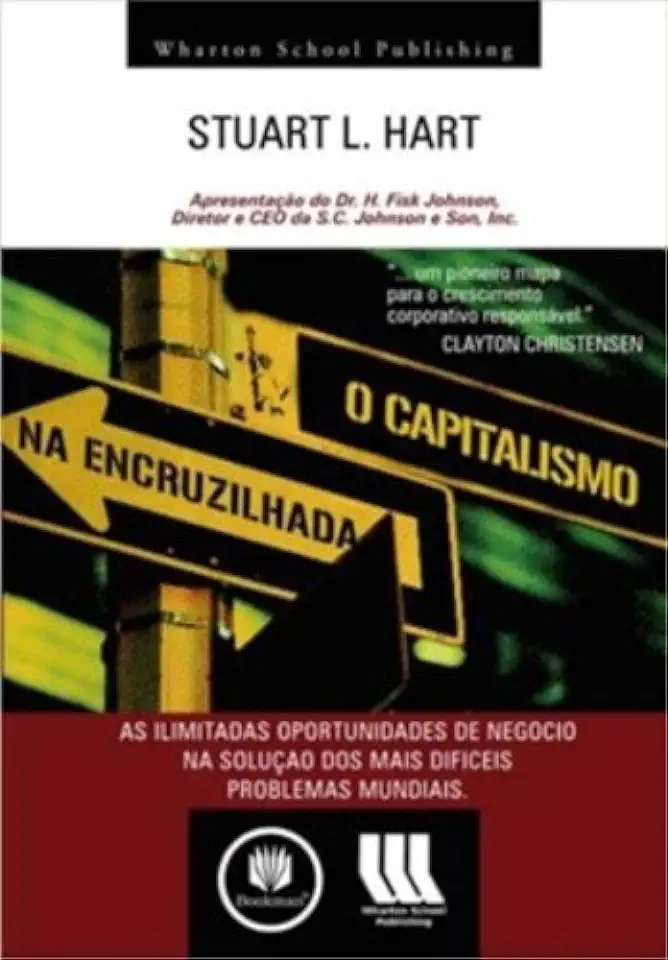
Capitalism at the Crossroads - Stuart L. Hart
Capitalism at the Crossroads: The Urgent Need for Business to Change Course
In his groundbreaking book, Capitalism at the Crossroads, Stuart L. Hart argues that the current model of capitalism is unsustainable and that businesses must change course if they want to survive. Hart presents a compelling case for why businesses need to adopt a more sustainable approach to their operations, and he offers a roadmap for how they can do so.
The Unsustainable Model of Capitalism
The current model of capitalism is based on the idea that the primary goal of businesses is to maximize shareholder value. This has led to a number of problems, including:
- Environmental degradation: Businesses have been responsible for a significant amount of environmental damage, including pollution, climate change, and deforestation.
- Social inequality: The current model of capitalism has led to a widening gap between the rich and the poor.
- Economic instability: The current model of capitalism is prone to boom-and-bust cycles, which can lead to job losses and economic hardship.
The Need for Change
Hart argues that businesses need to change course if they want to survive. The current model of capitalism is unsustainable, and it is only a matter of time before it collapses. Businesses that want to be successful in the long term need to adopt a more sustainable approach to their operations.
A Roadmap for Change
Hart offers a roadmap for how businesses can change course and adopt a more sustainable approach to their operations. He identifies four key areas where businesses need to make changes:
- Purpose: Businesses need to define their purpose beyond simply maximizing shareholder value. They need to articulate a clear mission that includes a commitment to sustainability.
- Strategy: Businesses need to develop strategies that align with their purpose. They need to make decisions based on long-term sustainability, not just short-term profits.
- Operations: Businesses need to make changes to their operations to reduce their environmental impact and improve their social performance. They need to invest in sustainable technologies and practices, and they need to work with their suppliers and customers to create a more sustainable supply chain.
- Governance: Businesses need to change the way they are governed. They need to give stakeholders a greater voice in decision-making, and they need to hold themselves accountable for their actions.
The Benefits of Change
Hart argues that businesses that adopt a more sustainable approach to their operations will reap a number of benefits, including:
- Increased profitability: Sustainable businesses are more likely to be profitable in the long term. They are less likely to be affected by environmental regulations and social unrest, and they are more likely to attract and retain customers who value sustainability.
- Reduced risk: Sustainable businesses are less likely to face legal and reputational risks. They are also less likely to be affected by supply chain disruptions and other external shocks.
- Enhanced innovation: Sustainable businesses are more likely to be innovative. They are more likely to develop new products and services that meet the needs of their customers, and they are more likely to find new ways to reduce their environmental impact.
- Improved employee morale: Employees are more likely to be engaged and motivated when they work for a sustainable business. They are more likely to feel proud of their work, and they are more likely to stay with the company for the long term.
Conclusion
Capitalism at the Crossroads is a must-read for anyone who cares about the future of business. Hart presents a compelling case for why businesses need to change course and adopt a more sustainable approach to their operations. He offers a roadmap for how businesses can do so, and he identifies the benefits that businesses will reap by making these changes.
If you are a business leader, I urge you to read this book. It will change the way you think about business, and it will inspire you to take action to create a more sustainable future.
Enjoyed the summary? Discover all the details and take your reading to the next level — [click here to view the book on Amazon!]